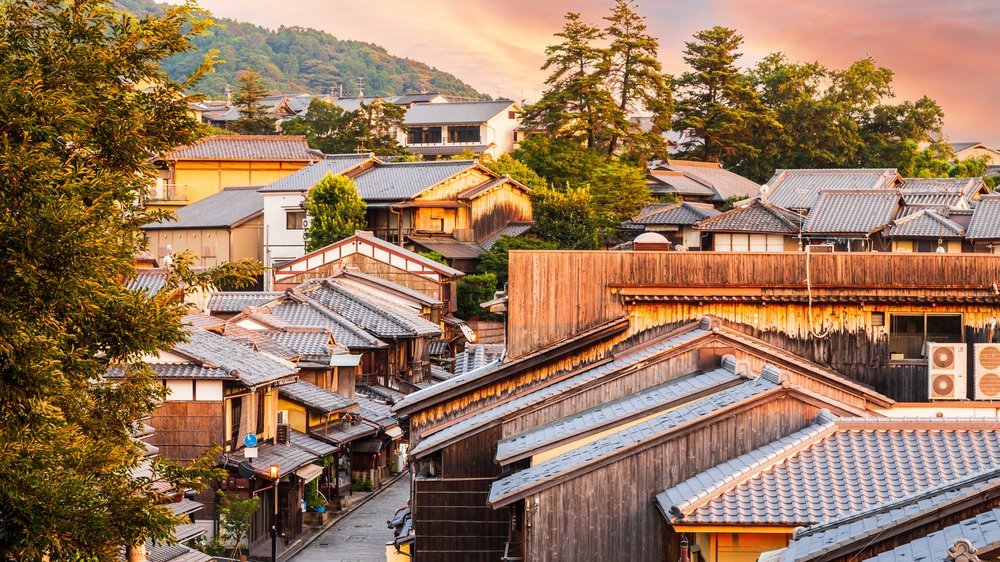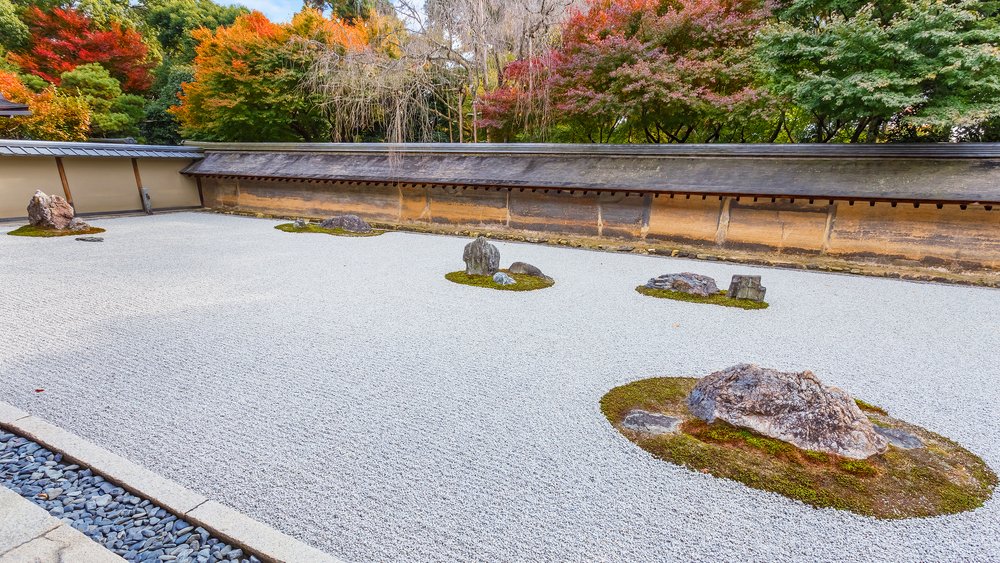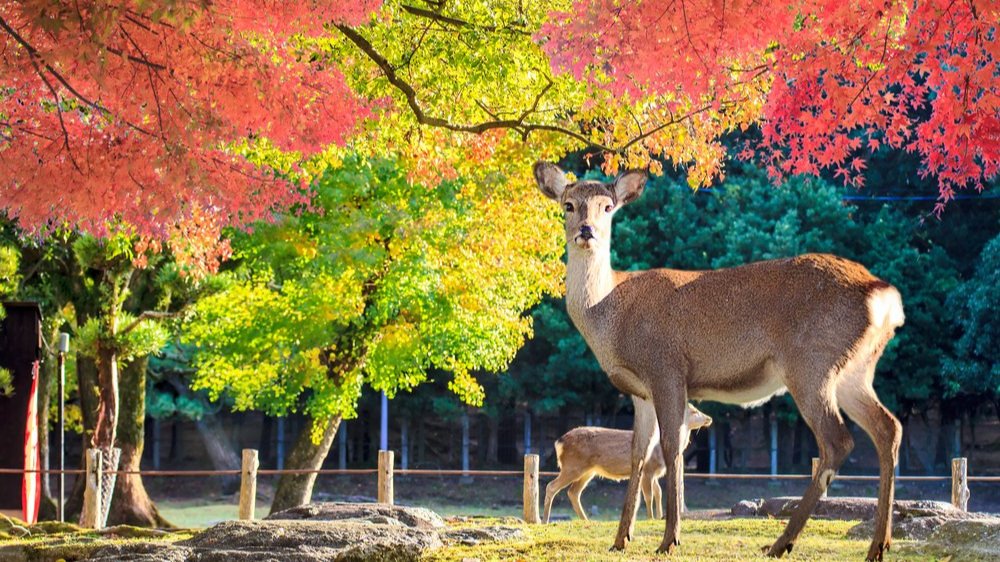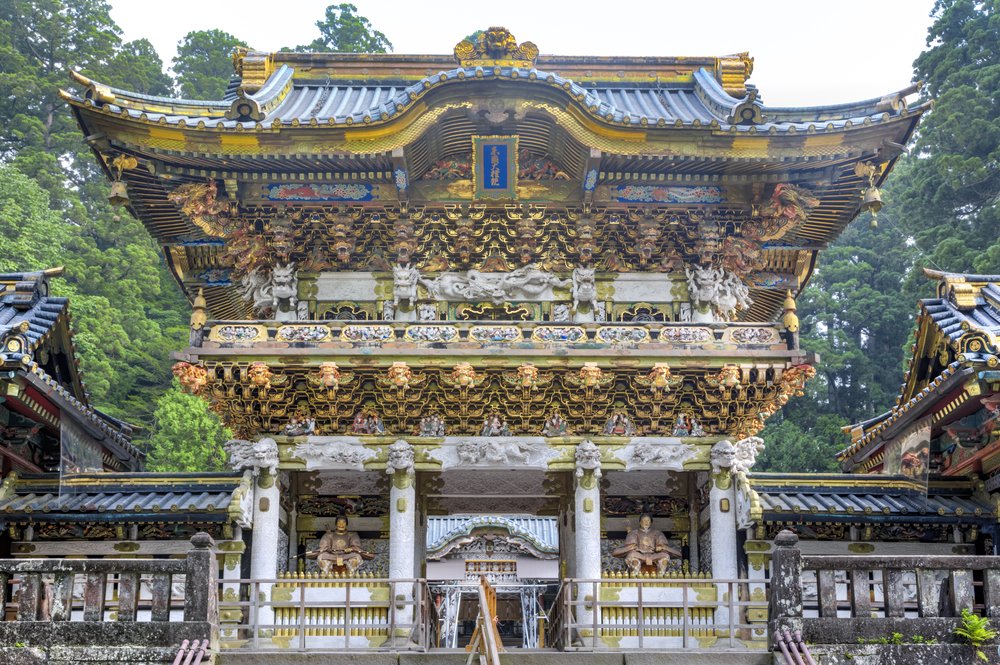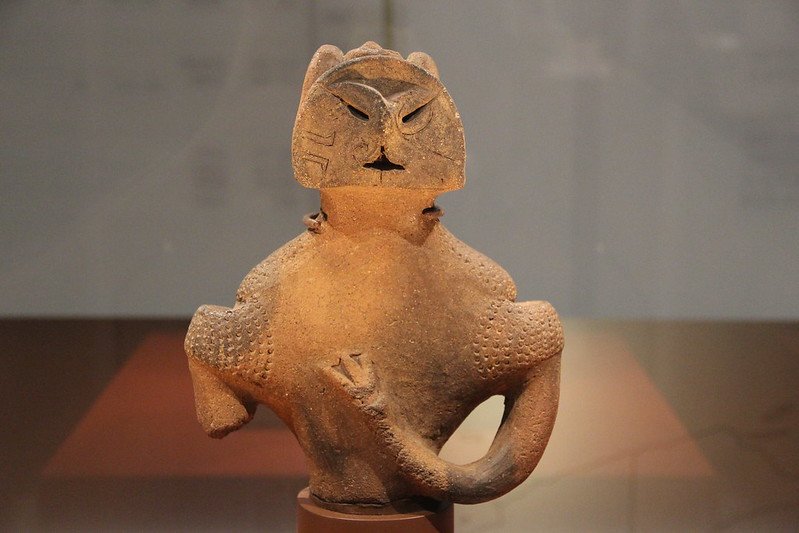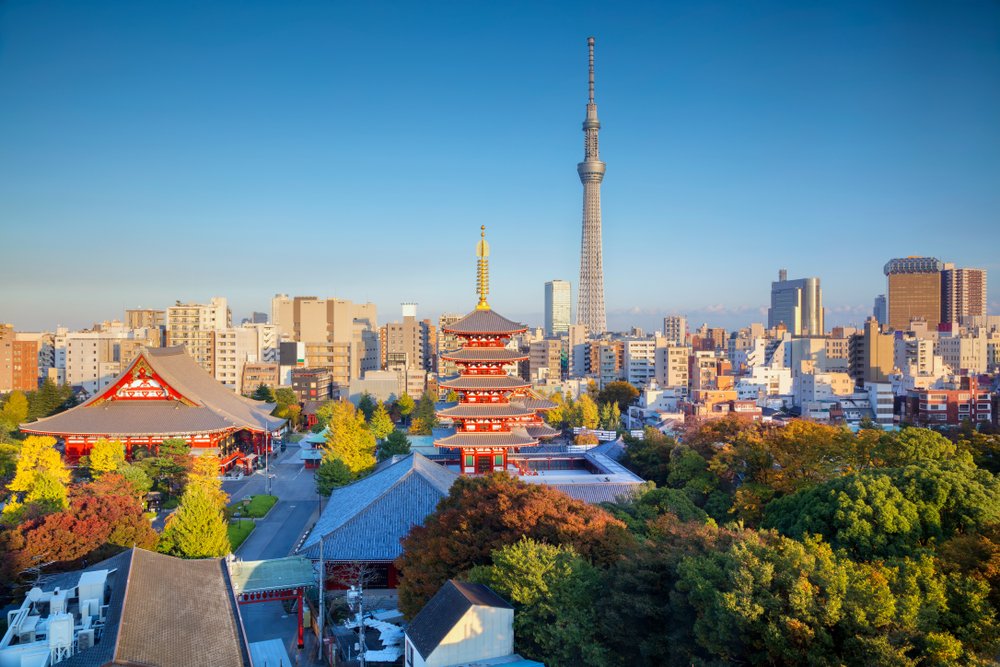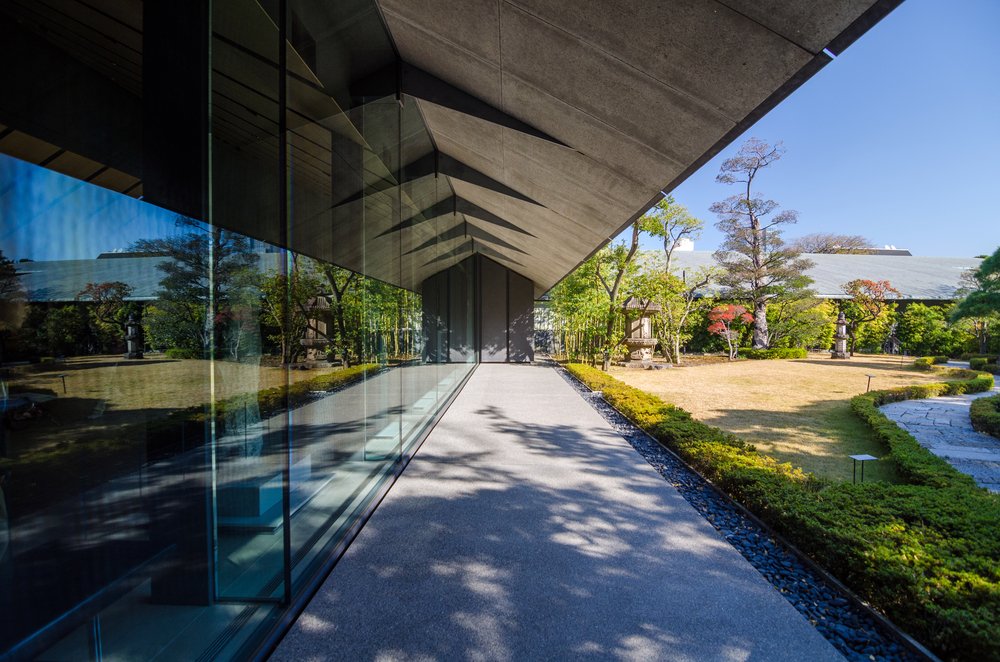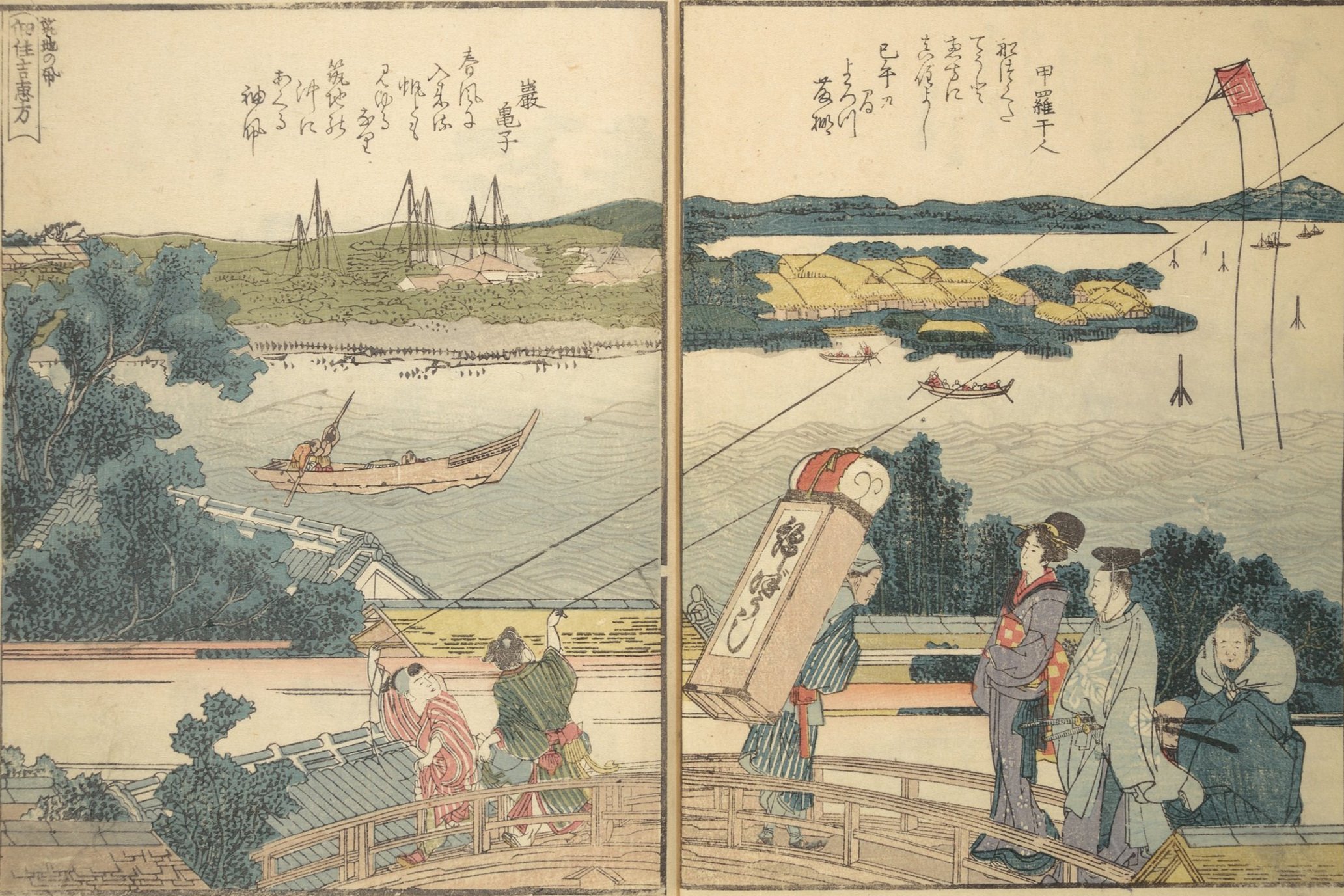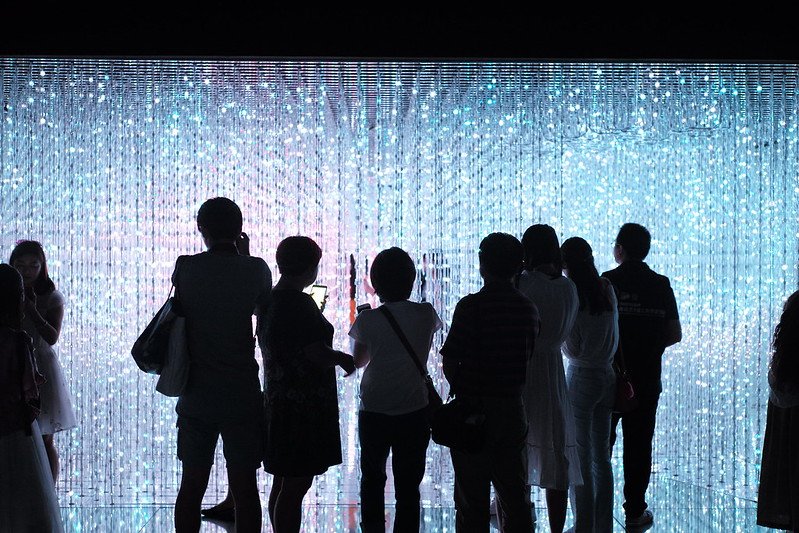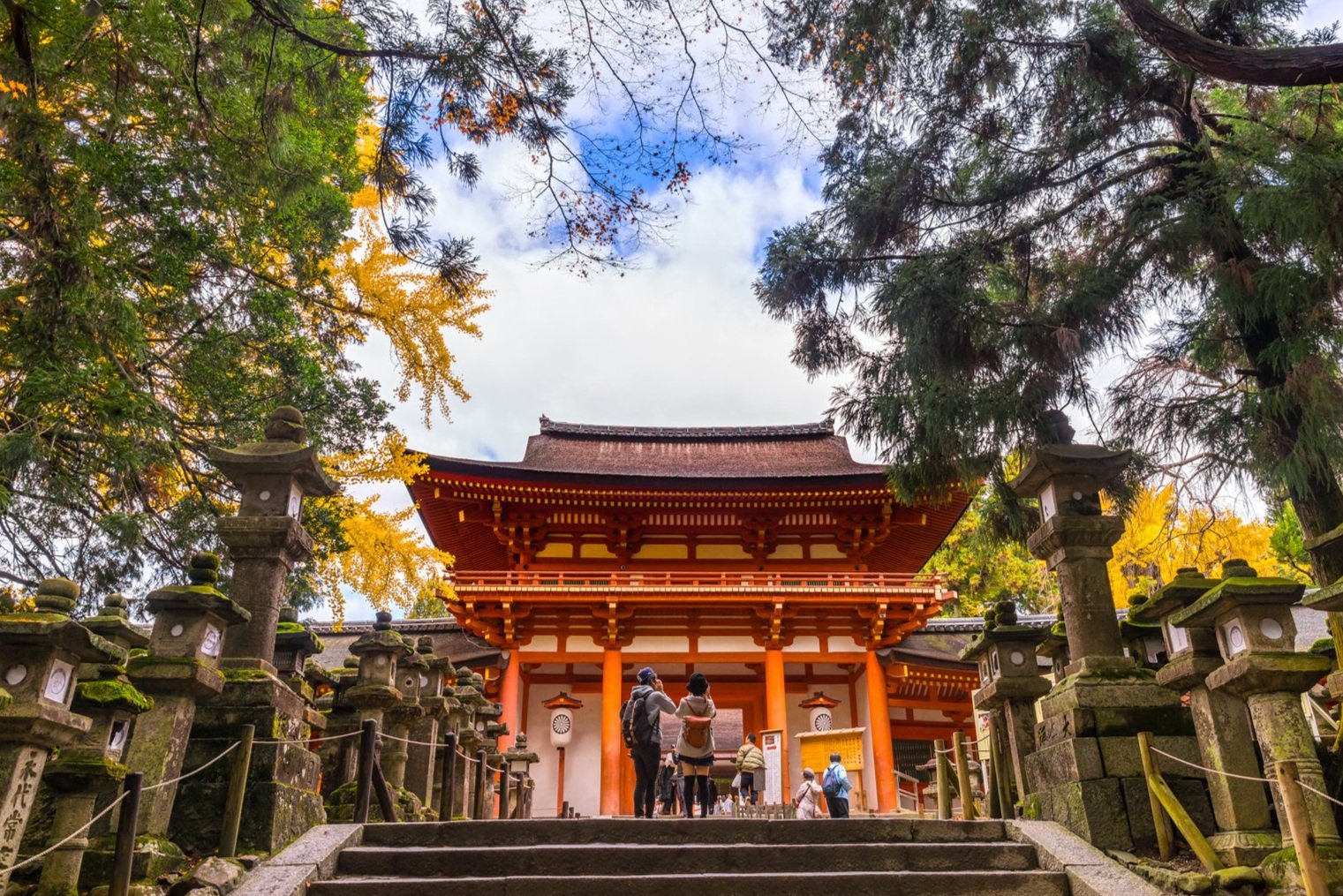
kyoto & tokyo:
a tale of two cities
14-26 november 2025
jackie menzies oam
Enjoy long stays to understand two of Japan’s most emblematic cities, the capital of traditional culture in Kyoto and the fast-paced metropolis of Tokyo
OVERVIEW
One of Japan’s enduring fascinations is how its millennial history and traditions are complemented by a love of the cutting-edge and contemporary. This is partly explained by a unique spirituality, a rejection of Western influence until the nineteenth century, and the nation’s post-war re-emergence.
On this 13-day tour we explore the interplay of tradition and modernity in two great cities, Kyoto and Tokyo. With long stays in apartment-style accommodation, we unpack our bags to uncover how their history, art, architecture, food and culture reveal Japan’s magnificent past and confident future. In Kyoto, the ‘Florence of Japan’, we appreciate the sophisticated designs of temples and gardens, and how modern artisans are innovating in traditional media such as ink painting and ceramics. In Tokyo we survey outstanding national collections and small museums designed by world-famous architects, and discover how the world’s largest metropolis is a still a mosaic of distinct neighbourhoods.
The tour is rounded out by excursions to the historic capitals of Nara and Nikkō, and is timed to take advantage of the lower visitor numbers. The group size is capped at 16 to facilitate moving around, and we are accompanied by a Japanese-speaking local guide.
TOUR LEADER
Jackie Menzies OAM has extensive experience with the art and culture of Asia, to which she has travelled in her role as Head of Asian Art at the Art Gallery of New South Wales. Jackie has made numerous research trips to Japan, Korea, Europe, India and South-East Asia, often for research which was realised in Asian acquisitions and exhibitions at the Art Gallery of New South Wales, and she has led many tours to these destinations for the Art Gallery Society and other bodies.
In 2001, Jackie received a Centenary Medal in the Order of Australia and in 2008 was awarded a Medal of the Order of Australia for the study, preservation and promotion of Asian art in Australia.
Details
DATES:
14 -26 November 2025
ITINERARY:
Kyoto (6 nights), Tokyo (6 nights)
PRICE:
$13,350pp twinshare
SINGLE SUPPLEMENT:
$2,950 for sole use of a double room
DEPOSIT:
$1500pp at time of booking
FITNESS: Above moderate: apartment-style accommodation; stairs; use of public transport; requirement to remove shoes at many sites
GROUP SIZE:
Max. 16 places
GETTING THERE:
The tour starts in Kyoto in the lobby of our hotel at 3.00pm on Friday 14 November 2025
-
Unpack your bags, with six nights each in Kyoto and Tokyo
Appreciate Japan’s early capital on a day trip to Nara’s peaceful temples and shrines, set amongst autumn colour
Discover the unique combination of history, religion, art and garden design that underpins Kyoto’s World Heritage-listed temples and shrines
Admire outstanding collections of art and artefacts, from encyclopedic collections in Kyoto and Tokyo to stunning private foundations such as Tokyo’s Nezu Museum
Understand Japan’s development far from Western influence, in the Tokugawa heartland of Nikkō
Explore Tokyo’s vibrant and diverse neighbourhoods, from Roppongi’s contemporary art to cutting-edge architecture on Ōmotesando and lively Ginza
-
Japan is a fascinating and enriching destination for cultural travel. The preservation of ancient culture and traditions has ensured that its distinct cultural identity remains intact, even as the Japanese are enthusiastic early adopters of emerging global technologies and economies.
This tour has been designed around two long stays in Kyoto and Tokyo, allowing us to get to know these cities well. As hotel rooms in Japan tend to be smaller, we have opted for apartment-style accommodation. While the apartment-hotels have an English-speaking reception and laundry facilities, no breakfasts are included. Instead, your tour leader will assist with you with shopping trips to pick up your supplies.
The Tokyo itinerary has also been designed to make use of Japan’s excellent public transport. Each tour member will be issued with a metro card, and our group is strictly limited to 16 participants to further ensure ease of mobility. Please note that this may involve the use of stairs, rather than escalators or elevators. While we schedule most of our subway travel out of peak periods, you may sometimes need to stand. When travelling between Kyoto and Tokyo, we will use the amazing high-speed train or Shinkansen.
In order to appreciate the authentic atmosphere of Japanese temple and shrines, you will need to remove your shoes or sit at low tables at several indoor sites.
A true delight of travelling in Japan is sampling its varied and seasonal cuisines. We have selected a number of traditional meals for our group dining, particularly at lunch. As our hotels are centrally located there is ample opportunity to make forays to izakaya, small restaurants and markets with your tour leader. The kitchen in your apartment means that you can enjoy a simple evening meal if you wish, and there are Western foods on offer everywhere, including in kombini. The latter, convenience stores, are like miniature supermarkets and, together with the extraordinary food courts in large department stores, are fun to explore.
As the apartment hotels do not have meeting rooms, before departure you will receive access to a set of pre-recorded tour lectures for you to stream at your convenience. These will be accessible before, during and after the tour, and will not expire – these resources will be yours to return to as often as you wish.
Your tour leader and local guide will of course be happy to assist with all arrangements.
-
FRIDAY 14 NOVEMBER – ARRIVAL (D)
An arrival transfer from Osaka airport is included for all participants; contact us for further information. The tour commences at 3.00pm in the lobby of our hotel in Kyoto, where we meet tour leader Jackie Menzies for an orientation stroll around our central neighbourhood. There is an opportunity to pick up supplies and groceries for your studio apartment, including a stop at a supermarket for your breakfast needs. In the evening, we enjoy a shabu-shabu dinner near our hotel. This cuisine was introduced in the twentieth century as the Japanese integrated more Western-style beef in the national diet. Paper-thin slices of beef are ‘swish swished’ (the onomatopoeic shabu-shabu) in broth, along with vegetables and noodles, and then eaten with various savoury dipping sauces. First of six nights in Kyoto.
SATURDAY 15 NOVEMBER - THE ANCIENT CAPITAL OF NARA (L)
Today we have a private coach excursion to Nara. Nara was one of imperial Japan’s earliest capitals, and one of the first sites to reflect the impact of the newly-introduced religion of Buddhism. We begin at Todai-ji, a UNESCO-listed monument that was founded in 738 CE and, even after modern rebuilding, is still thought to be one of the world’s largest wooden structures. The firing of its giant bronze Vairocana Buddha, or Daibutsu, resulted in extensive deforestation, with Japanese from all walks of life required to contribute labour to the huge project. After a welcome lunch, we continue to Kasuga Shrine, a vastly different site. Also established in the eighth century, it is a Shinto shrine associated with the powerful Fujiwara dynasty, and its vermillion pavilions, some still lit by flickering lanterns, sit in peaceful woodlands that host many sacred deer. Returning to Kyoto, the evening is at leisure.
SUNDAY 16 NOVEMBER - HIGASHIYAMA & AN OVERVIEW OF KYOTO (L)
The city of Heian-kyō was founded in 794, its name chosen by poetry competition to signify ‘City of Peace and Tranquillity’. An imperial base for centuries, it later became known simply as Kyoto (‘the capital’). This morning we meet our Japanese guide for an introduction to Kyoto’s eastern mountain district, Higashiyama. At World Heritage-listed Kiyomizu-dera, one of Kyoto’s most ancient temples and built without a single nail, we enjoy a spectacular view over the city. We then stroll down through the Higashiyama district before we continue to Kodai-ji monastery to learn about the tea ceremony. After lunch together, we visit one of Kyoto’s celebrated hanamachi, or geisha districts, the well-preserved Gion. Returning to our apartment-hotel by coach, the evening is at leisure.
MONDAY 17 NOVEMBER - KYOTO’S ZEN TEMPLES (L)
In the sixth century, Chan Buddhism was introduced to Japan from China. Zen, as it was called there, with its focus on discipline, meditation and the mysteries of life – and artforms such as calligraphy, garden design, ink-wash painting and tea ceremony – quickly became one of the most important religious sects in the country. We have an early start today to beat the crowds at a temple more closely associated with Zen than many others. Ryōan-ji, or the Temple of the Dragon at Peace, is surrounded by a large and beautifully-designed ‘stroll garden’, designed for appreciating the seasonal beauty of a small lake, but it’s the kare-sansui or ‘dry landscape garden’ of stone, moss, gravel and wall that makes Ryōan-ji so famous, and those who can see all of its fifteen stones at once – apparently placed in this meaningful and meditative arrangement in the fifteenth century – are reputed to have reached enlightenment. Afterwards, we continue to Gingaku-ji, or the Temple of the Silver Pavilion. Another Zen temple that began life as a pleasure villa, it is nestled in the side of a mountain and its simple wooden building, a paragon of the rustic wabi-sabi style, sits in one of Kyoto’s most beautiful autumn gardens. There is time afterwards to stroll the Philosopher’s Walk, a prosaic nineteenth-century aqueduct that was lined with cherry trees and is a popular cherry-blossom viewing spot in sakura season. After a shojin ryori-style lunch, the simple but elegant food of Zen monks, we visit a few sub-temples in the vast Daitoku-ji. One of Kyoto’s most important Zen complexes, its monasteries preserve more ‘dry landscape’ or Zen gardens, along with ink-wash screens and hanging scrolls, and it was one of the most important places for the development of tea ceremony under Zen master Sen no Rikyū. Returning to our hotel, the evening is at leisure.
TUESDAY 18 NOVEMBER - JAPANESE ARTS & CRAFTS (L)
Kyoto is sometimes called the ‘Florence of Japan’, and it prides itself on the preservation of ancient arts and crafts. These are our focus today, as we commence with a visit to the tranquil Kawai Kanjiro House and Studio. Located in a quiet lane of the Higashiyama pottery district, it was the residence and laboratory of one of twentieth-century Japan’s most important potters. Kawai Kanjiro was a significant figure in the mingei movement, which celebrated traditional styles and techniques in the decades following the rapid Westernisation of the Meiji period. Afterwards, we continue to Sanjūsangen-dō, a Buddhist temple founded in the twelfth century and today known for its thousands of statues of gilded wooden Buddhas, Kannon (goddess of mercy), bodhisattvas and other designed National Treasures. This craft, of multiple woodblock statues, is still taught and practised at arts colleges in Kyoto. After lunch, we have an introduction to other artforms, from screens and scrolls to ceramics and textiles, in Kyoto’s National Museum. Following our introduction, there is time to explore the collection independently before we return to our hotel. The evening is at leisure, with your tour leader on hand to assist with arrangements.
WEDNESDAY 19 NOVEMBER - AT LEISURE (D)
Even a week in Kyoto means selecting some sites to the exclusion of many other equally interesting ones, so today is entirely at leisure to explore more places of your choosing. You could spend the day in the famous Nishiki food market and the many interesting shops of Teramachi street. You might prefer to make the easy journey by train to Arashiyama, known for its beautiful gardens and haunting bamboo forest. Ni-jō Castle offers a historic perspective, or perhaps you would like to spend the day in vibrant Osaka, a bustling modern metropolis with a very different feel to traditional Kyoto. Kathleen and our Japanese guide will be happy to provide suggestions and assistance for your explorations, before we meet in the hotel in the late afternoon for a special private function. Final night in Kyoto.
THURSDAY 20 NOVEMBER - TO TOKYO (D)
We check out of the hotel this morning and travel by Shinkansen to Tokyo. Please note that today you travel with your carry-on luggage only; your large suitcase will be shipped to Tokyo by truck and arrive tomorrow, so please pack clothing, toiletries and supplies (including medication) for an overnight stay without your main luggage. The bullet train is a very comfortable and smooth journey, with the opportunity to purchase a bento box for lunch in Kyoto station and/or snacks on the train. Arriving in Tokyo, we transfer by coach to our apartment-hotel and there is an orientation stroll before dinner in a local restaurant. First of six nights in Tokyo.
FRIDAY 21 NOVEMBER - NEIGHBOURHOODS & NATIONAL COLLECTIONS
Today we take the subway to the Yanaka Ginza district. It is one of the only surviving areas in Tokyo to indicate what this bustling metropolis looked like before the devastating fires of WWII. Until the seventeenth century, the bay of Edo hosted a humble fishing village, but the Tokugawa shoguns – who ‘unified’ the archipelago under their dynasty and limited the power of the emperor – recognised that Edo was a better geographical capital than Kyoto in the south. The city became the largest in the early modern world and was eventually known only as “Tōkyō” (Eastern Capital), to distinguish it from “Kyōto” (The Capital). Lunch is at leisure before an afternoon in the staggering National Museum, a series of collections that trace the history, archaeology and culture of Japan’s many artforms. After an introduction, there is ample time to focus independently on your interests, from hanging scrolls to kimono, Chinese antiquities and woodblock prints. We return to the hotel by public transport, although you might prefer to continue exploring Ueno Park and return independently.
SATURDAY 22 NOVEMBER - NIKKŌ (L)
The Tokugawa shoguns who so transformed Edo-Tōkyō had their traditional territories in a region 140km to the north. Today we make an excursion to Nikkō, an area indelibly associated with Tokugawa power and the perfect place to see the style of art and architecture that the family preferred. Tōshō-gū is the World Heritage-listed mausoleum of the shogunate’s founder, Tokugawa Ieyasu, and was constructed in 1617 in an elaborate and highly coloured style. After lunch together, we return to Tokyo for an evening at leisure.
SUNDAY 23 NOVEMBER - MEIJI TO MODERN
This morning we depart our apartment-hotel to travel by subway to Harajuku, a neighbourhood associated with an irrepressible and youthful kawaii (cute) style. We stroll down the architecturally significant Omotesandō street, Tokyo’s Champs-Elysées, to visit the Ōta Memorial Museum of Art. This private museum opened in 1980 to showcase the ukiyo-e or woodblock prints of businessman Ōta Seizo V. A small museum, it presents the prints in beautiful, themed displays that allow for close examination and contextualise the complex printing process. After time for lunch at leisure, we conclude the day with a visit of the beautiful Nezu Museum. Another stunning private collection, this time of railway magnate Nezu Kaichirō, it narrowly escaped destruction in WWII and the main building was sensitively designed by starchitect Kenzo Kuma. The collection focuses on Chinese antiquities and Japanese treasures of the tea ceremony, and the peaceful garden is one of Tokyo’s most memorable. Returning to the hotel, the evening is at leisure.
MONDAY 24 NOVEMBER - DAIMYO & DIGITAL ART
We travel by subway this morning to teamLab Borderless at Azabudai Hills. TeamLab is a Japanese art collective that was founded in 2001 and focuses entirely on immersive digital art installations. More than mere selfie-fodder, these vibrant light and media displays react to visitors, moving and connecting with them, and together form a ‘borderless world’ that offers some of the best and most uplifting digital art to be found. After free time for lunch we continue to Hama-rikyū gardens. Located on the mouth of the Sumida River on Tokyo Bay, it is a rare example of the aristocratic garden style of the daimyo or feudal lords who, with their retainers or samurai, provided much-needed support to the shogun. There is a pleasing contrast between tradition and modernity in its wooden teahouse, perched on stilts over a lake with the skyscrapers of Tokyo as a backdrop. Later we board our coach and visit the Kyū-Iwasaki-Tei Garden, a Western-style mansion that was the former estate of the Meiji-era industrialist Iwasaki family, founders of Mitsubishi Corporation. The evening is at leisure, with your tour manager on hand to assist with your arrangements.
TUESDAY 25 NOVEMBER - SUMIDA & SURROUNDS (D)
Today we focus on the districts on either side of the Sumida river. In Edo, this area was initially something of a no-man’s-land, and drinking houses and establishments of the night popped up along its banks, a ‘Floating World’ associated with the pleasures of life that Buddhism teaches are intangible and fleeting as much as they are desirable. The poet Bashō lived along the banks of the Sumida and drew inspiration from the Floating World, as did many courtesans and the woodblock designer Katsushika Hokusai. At the Sumida Hokusai Museum, we appreciate the extraordinary architecture of the SANAA firm, which also lies behind the Sydney Modern Project, as well as an exhibition of prints by the great Hokusai. Crossing back over the river, lunch is at leisure in the alleys around Sensō-ji. This Buddhist temple, with its iconic gate and towering pagoda, is one of Tokyo’s best-known sites, and has its origins as a place of pilgrimage dedicated to the goddess of mercy. There is time at leisure this afternoon to pack, before our farewell dinner. Final night in Tokyo.
WEDNESDAY 26 NOVEMBER - DEPARTURE
Our tour concludes this morning. A departure transfer to the airport is included for all participants; contact us for further information.
-
Mimaru Shinmachi Sanjo Apartment Hotel 3*, Kyoto, 6 nights
https://mimaruhotels.com/en/hotel/shinmachi-sanjo/
We have reserved Family Apartments of 40sqm in this modern complex, with a kitchenette, free wifi, laundry facilities and English-speaking reception staff. The bathroom will be serviced daily, and bed linen changed and the apartment cleaned on the fourth day of our stay.
Mimaru Tokyo Ikebukuro Apartment Hotel 3*, Tokyo, 6 nightshttps://mimaruhotels.com/en/hotel/ikebukuro/
Conveniently located in one of Tokyo’s major city centres close to department stores, shopping and dining with access to Tokyo’s excellent rail network, this apartment-hotel offers similar facilities as in Kyoto. We have reserved Standard Family rooms of 39sqm.
NB: hotels of a similar standard may be substituted.
-
Arrival transfer from Osaka airport to Kyoto and departure transfer in Tokyo
12 nights’ accommodation at 3* apartment-hotels, with a kitchenette, living area and access to laundry facilities
9 lunches or dinners, including drinks
NB the apartment-hotels do not provide breakfastAll ground transport and entrance fees to sites as mentioned in the itinerary, including Tokyo metro card
Services of a Japanese guide throughout, with gratuity for the guide included
Commentary by and expertise of an Australian tour leader throughout
Access to a password-protected site offering a series of lectures on Japan’s history and art by your tour leader, available to stream before, during & after the tour
-
A $1,500pp deposit is required at the time of booking to hold your place on tour.
We will invoice you for final payment for the tour, due on 29 August 2025.
-
When you book on one of tours, we ask you to accept our terms and conditions. You can read our terms and conditions here.
BOOK YOUR PLACE
A deposit of $1,500pp is required at the time of booking to hold your place on this tour.
NEED TIME TO CONFIRM YOUR PLANS?
You can hold a place on the with no obligation for 7 days while you check your other arrangements.
QUESTIONS?
Get in touch with us on (02) 8599 4201 or email



